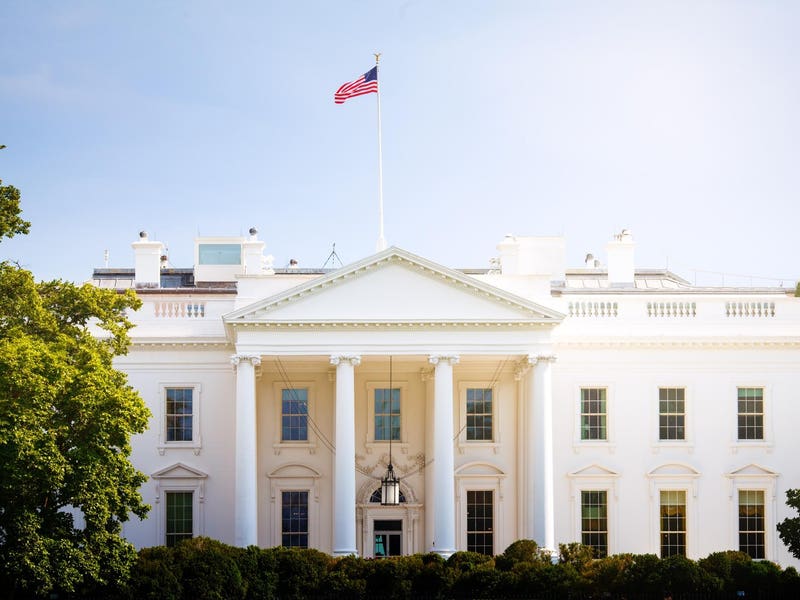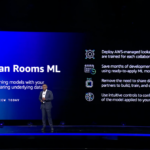Recently, the executive order on emerging AI technologies was announced by the White House, signifying a pivotal moment in legislation aimed at safeguarding the U.S. government and its workforce. This comprehensive directive encompasses various aspects such as government-industry collaboration, AI security, worker support, innovation, competition, and leadership in the AI domain.
Furthermore, the establishment of the United States AI Safety Institute (US AISI) within NIST was unveiled as a key initiative. The primary objective of the US AISI is to develop guidelines, tools, and best practices to identify and mitigate AI-related risks effectively.
This strategic move by the White House marks a significant shift in the government’s approach to AI in an ever-evolving landscape. It mirrors the evolving landscape of AI in business sectors like supply chain management, manufacturing, logistics, and inventory control. The executive order emphasizes the importance of ensuring the safety and security of AI systems and networks on a broad scale.
However, the question arises: how will these guidelines impact industrial distribution and manufacturing inventory? There is a potential to mitigate risks associated with AI systems in logistics, such as biases in routing algorithms or vulnerabilities in inventory tracking cybersecurity. Will companies operating in these sectors be mandated to submit their software tools and data codes for governmental oversight?
Let’s delve deeper into how this executive order could influence the supply chain, manufacturing industry, and materials inventory sector.
Integration of AI in the Supply Chain
The utilization of AI across the supply chain landscape is not a novel concept. Automation of digital processes has become imperative in today’s operational environment, with AI playing a central role in driving efficiency. AI-driven chatbots are already enhancing customer service and order tracking capabilities. As AI technology advances, AI co-pilots are poised to take on more complex supply chain responsibilities.
The benefits of AI in planning, forecasting, procurement, warehouses, and transportation are rapidly expanding, offering a plethora of opportunities. Presently, AI facilitates real-time insights, predictive analytics, and scenario modeling, thereby accelerating supply chain decision-making processes. This enables companies to streamline demand forecasting, inventory management, and transportation planning, resulting in cost savings and operational enhancements.
The executive order acknowledges the transformative impact of AI on enhancing supply chain efficiency and resilience. The efficacy of AI-driven supply chain applications was evident during the COVID-19 pandemic, showcasing their ability to address supply chain bottlenecks more effectively than traditional methods. It is hoped that these experiences will prompt the White House to endorse more AI-driven applications tailored for the supply chain, fostering innovation and competitive advantages in future scenarios.
Enhancements in Logistics and Inventory Management
Another salient aspect of the executive order is the focus on improving logistics and inventory management through AI integration. AI has the potential to optimize routes, reduce transportation costs, and minimize delivery times, thereby contributing to a more sustainable and environmentally friendly operational framework. Additionally, AI aids in enhancing inventory control by enabling real-time tracking and demand forecasting.
The industry is witnessing a surge in AI applications, with machine learning algorithms analyzing historical data and current conditions to optimize inventory management. Computer vision AI monitors shelf inventory levels, while sensor-equipped AI systems predict maintenance requirements for equipment and infrastructure. By leveraging AI technology, companies can achieve lean and efficient operations, revolutionizing traditional practices.
Through the implementation of AI-powered MRO platforms, companies can enhance demand signaling by identifying purchasing and consumption patterns. AI optimization in inventory tracking and storeroom management provides manufacturers with comprehensive insights into their supply network, facilitating informed decision-making with minimal effort.
Given the critical role of logistics and inventory management in the supply chain ecosystem, the directives outlined in the executive order pave the way for companies to adopt AI-driven solutions, thereby enhancing supply chain resilience, reducing operational costs, and mitigating environmental impact.
Talent Acquisition and Training
The executive order underscores the importance of nurturing a skilled AI workforce, particularly in the context of supply chain operations. By expanding visa opportunities for AI experts and technicians, the order aims to attract top talent in emerging technologies. Moreover, updating occupational roles in alignment with technological advancements can expedite the integration of smart technology talent into supply chain companies.
It is evident that supply chain companies stand to benefit significantly from a tech-savvy workforce adept in AI applications. By fostering a workforce equipped with AI skills, companies can effectively implement AI strategies within their supply chain operations. Corporate training programs focused on AI can facilitate the upskilling and retraining of employees, thereby enhancing organizational capabilities in the AI domain.
Additionally, the executive order emphasizes the importance of evaluating AI governance and risk management within federal agencies, aiming to enhance transparency, safeguard federal workers, and mitigate risks associated with governmental AI implementations.
Future Prospects for AI in Supply Chains
The White House executive order on AI presents a multitude of opportunities and challenges that necessitate collaborative efforts among academia, government entities, and private industries. To fully leverage the potential of AI in supply chains, concerted focus is required in several key areas:
- Establishment of open data standards and protocols to facilitate seamless communication and learning among AI systems.
- Ensuring data privacy and security to safeguard sensitive information while optimizing AI performance.
- Fostering trust in purpose-built AI systems that augment existing workforce capabilities.
- Developing AI tools and processes that are transparent and comprehensible to users, fostering trust and acceptance.
- Providing comprehensive training programs for both new and existing employees to effectively leverage AI tools and technologies.
By advancing collaboratively in these areas, supply chain professionals and companies can unlock new levels of operational efficiency, insights, and customer value through AI integration. The recent establishment of the White House Council on Supply Chain Resilience further underscores the government’s commitment to strengthening the nation’s supply chains. The journey towards realizing the full potential of AI in supply chains requires ongoing collaboration and innovation to uphold American supply chains as a top priority in the global landscape.






